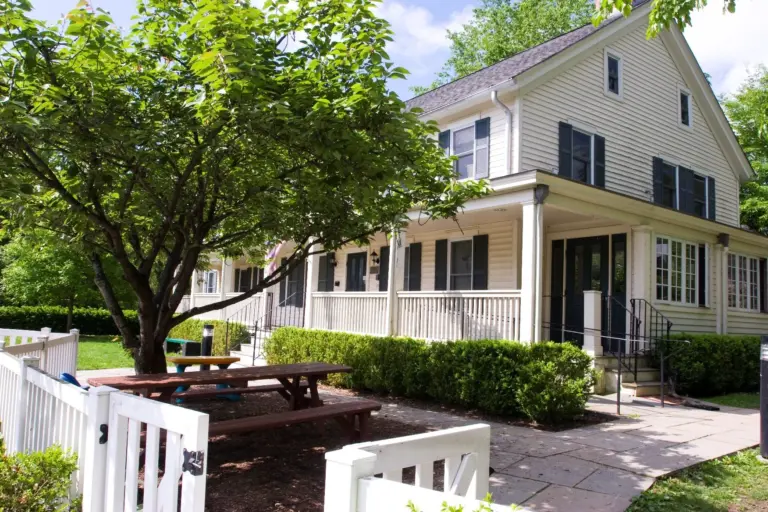By The Rev. Edward Horstmann
Jonathan Kozol is a writer whose mission is to bring into full view the plight of impoverished children in the South Bronx. When asked why he does so, he tells people: “I write to change the world.”
Jesus also used stories to change the world and one of them, the Parable of the Good Samaritan, has given us a profound vision of what it means to be a good neighbor. This story was born when a lawyer asked Jesus to define the surest path to eternal life. Jesus tossed the question back at the questioner, who responded by saying that love for self, neighbor, and God, would be the surest route to life everlasting. Jesus agreed, but the encounter did not end there. “And who is my neighbor?” asked the lawyer, no doubt wanting to know just how narrowly he could restrict his love and still get to his ultimate destination.
In response to that question, Jesus told a story about a man who was traveling from Jerusalem to the town of Jericho when he was attacked by robbers, who beat him and left him for dead. First one and then another religious leader also came along that way, and saw the man, but removed themselves to the other side of the road and offered no assistance. Afterwards a Samaritan man came along, saw what the others saw, but treated the man’s wounds, placed him on the animal who was with him, and brought him to an inn where long-term care could be provided. “Which of these three was the neighbor?” asked Jesus. The lawyer responded without hesitation: “The one who showed mercy.” “Go and do likewise,” said Jesus.
This parable ends on an upbeat note, but the story has a rub. A strong sense of division had grown up between Jews and Samaritans in the centuries before Jesus’ birth, so it was odd, to say the least, that Jesus would have made a Samaritan the hero of his story. Yet that’s exactly what he did, and for two thousand years this short story has made those who hear it think long and hard about how we might miss the goodness in other people because of the way we judge them. Who’s to say when some version of a Samaritan might turn out, beyond all our expectations, to be a spectacular neighbor?
The beauty of this parable is that it shows love at work in so many different ways. In the kind Samaritan we see radical compassion for a stranger, and his willingness not only to act in the moment but to provide long term care for the injured man. There’s charity here, but there’s also commitment. And it says something about the innkeeper in the story that the Samaritan felt comfortable enough to place the life of this wounded individual in his care.
When I stop to consider this story, I see it as inspiring and challenging. Because not only was Jesus indicating that we must look past our differences to see the humanity in one another, he was also confident that all of us are capable of being Good Samaritans in our own way. That’s why the story concludes with a brief commandment to the lawyer: “Go and do likewise.”
Who are the Samaritans for us? Who have we misjudged or denigrated or dismissed because we arrogantly presumed to draw conclusions about their character without making the effort to reach out with genuine interest? We may know that someone holds very different views from our own with respect to abortion, climate change, or political affiliation. But when do we “cross the road” to draw near to that person, to ask how they formed their convictions, and to discover whether they believe that there is still common ground to be shared with those who disagree with them? We live at a time when differences easily divide. But the Samaritan could have cared less about the political or religious affiliations of the man who was injured and lying in a ditch. What he saw was another human being who needed care, and care is what he offered.
The distinctive gift of the Good Samaritan was to draw near to the man on the side of the road while those who passed by kept their distance. He drew close enough to see that man’s wounds and tend to them, close enough to hear his shallow breathing, and close enough to realize that this man’s life was now in his hands. When we encounter others who may need our help, or who differ from us in significant ways, how can we also draw near to befriend, to show genuine interest, and to find common ground? The world has enough good haters; let’s embrace our calling to be good neighbors.
Thank God that God is always reaching out to us, drawing near to help and heal. Thank God for the God-given power that helps us to touch lives in ways that build up rather than tear down: power to build bridges of understanding rather than walls that separate. Let’s put that power to good use.
Jonathan Kozol is a writer whose mission is to bring into full view the plight of impoverished children in the South Bronx. When asked why he does so, he tells people: “I write to change the world.”
Jesus also used stories to change the world and one of them, the Parable of the Good Samaritan, has given us a profound vision of what it means to be a good neighbor. This story was born when a lawyer asked Jesus to define the surest path to eternal life. Jesus tossed the question back at the questioner, who responded by saying that love for self, neighbor, and God, would be the surest route to life everlasting. Jesus agreed, but the encounter did not end there. “And who is my neighbor?” asked the lawyer, no doubt wanting to know just how narrowly he could restrict his love and still get to his ultimate destination.
In response to that question, Jesus told a story about a man who was traveling from Jerusalem to the town of Jericho when he was attacked by robbers, who beat him and left him for dead. First one and then another religious leader also came along that way, and saw the man, but removed themselves to the other side of the road and offered no assistance. Afterwards a Samaritan man came along, saw what the others saw, but treated the man’s wounds, placed him on the animal who was with him, and brought him to an inn where long-term care could be provided. “Which of these three was the neighbor?” asked Jesus. The lawyer responded without hesitation: “The one who showed mercy.” “Go and do likewise,” said Jesus.
This parable ends on an upbeat note, but the story has a rub. A strong sense of division had grown up between Jews and Samaritans in the centuries before Jesus’ birth, so it was odd, to say the least, that Jesus would have made a Samaritan the hero of his story. Yet that’s exactly what he did, and for two thousand years this short story has made those who hear it think long and hard about how we might miss the goodness in other people because of the way we judge them. Who’s to say when some version of a Samaritan might turn out, beyond all our expectations, to be a spectacular neighbor?
The beauty of this parable is that it shows love at work in so many different ways. In the kind Samaritan we see radical compassion for a stranger, and his willingness not only to act in the moment but to provide long term care for the injured man. There’s charity here, but there’s also commitment. And it says something about the innkeeper in the story that the Samaritan felt comfortable enough to place the life of this wounded individual in his care.
When I stop to consider this story, I see it as inspiring and challenging. Because not only was Jesus indicating that we must look past our differences to see the humanity in one another, he was also confident that all of us are capable of being Good Samaritans in our own way. That’s why the story concludes with a brief commandment to the lawyer: “Go and do likewise.”
Who are the Samaritans for us? Who have we misjudged or denigrated or dismissed because we arrogantly presumed to draw conclusions about their character without making the effort to reach out with genuine interest? We may know that someone holds very different views from our own with respect to abortion, climate change, or political affiliation. But when do we “cross the road” to draw near to that person, to ask how they formed their convictions, and to discover whether they believe that there is still common ground to be shared with those who disagree with them? We live at a time when differences easily divide. But the Samaritan could have cared less about the political or religious affiliations of the man who was injured and lying in a ditch. What he saw was another human being who needed care, and care is what he offered.
The distinctive gift of the Good Samaritan was to draw near to the man on the side of the road while those who passed by kept their distance. He drew close enough to see that man’s wounds and tend to them, close enough to hear his shallow breathing, and close enough to realize that this man’s life was now in his hands. When we encounter others who may need our help, or who differ from us in significant ways, how can we also draw near to befriend, to show genuine interest, and to find common ground? The world has enough good haters; let’s embrace our calling to be good neighbors.
Thank God that God is always reaching out to us, drawing near to help and heal. Thank God for the God-given power that helps us to touch lives in ways that build up rather than tear down: power to build bridges of understanding rather than walls that separate. Let’s put that power to good use.
The Rev. Dr. Ed Horstmann is the Senior Pastor of Round Hill Community Church. He is also an artist who loves to play tennis.




